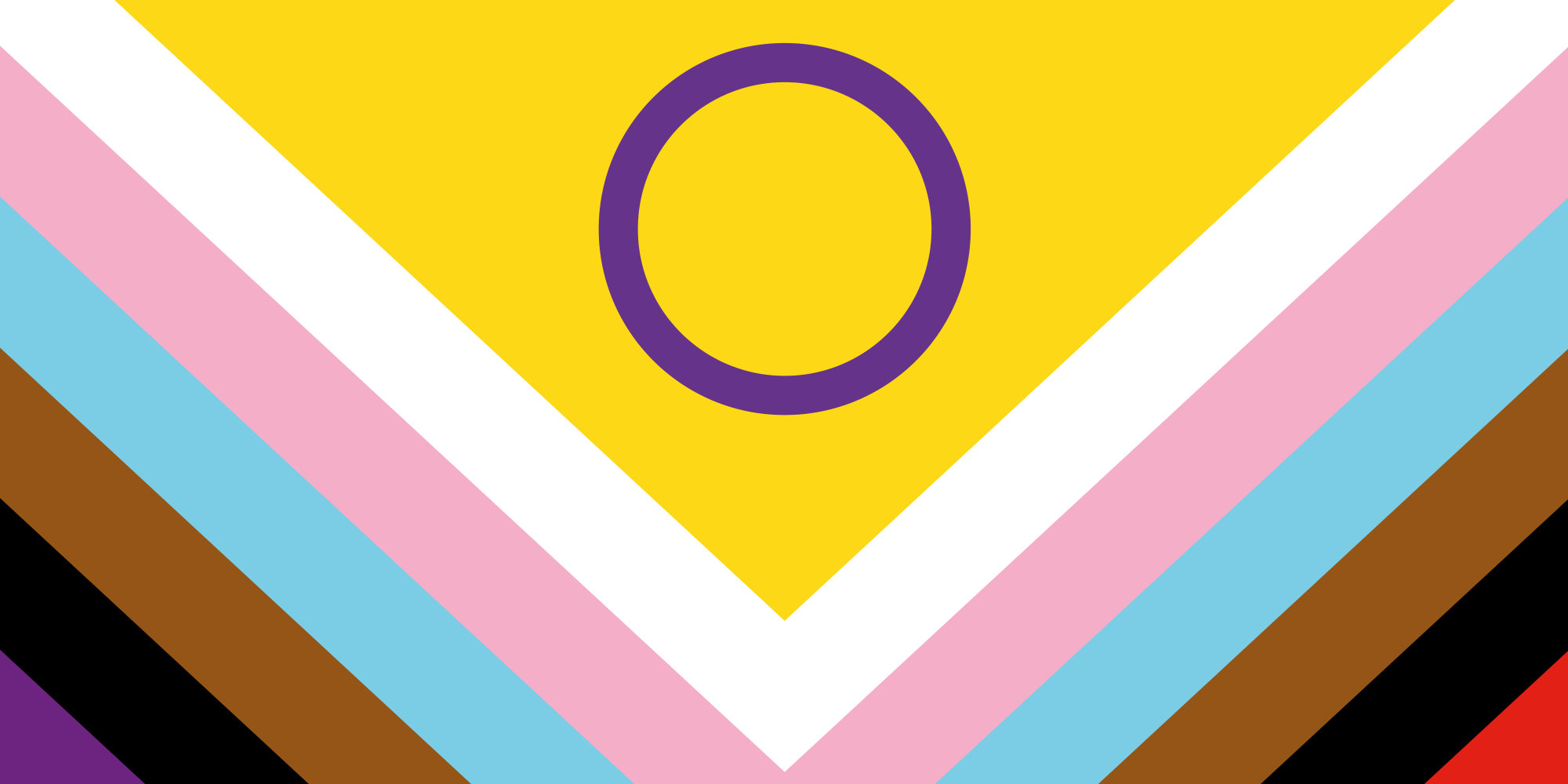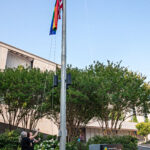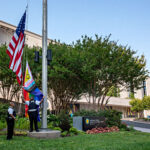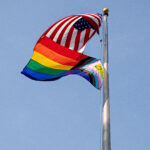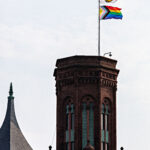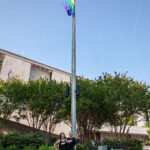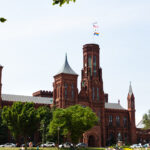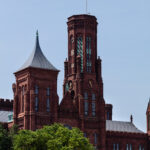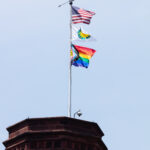In 2023, Cooper Hewitt hung the Intersex-Inclusive Progress Pride flag on its south-facing facade. The installation celebrates LGBTQ+ Pride Month and demonstrates the evolution of inclusivity in the design of Pride flags.
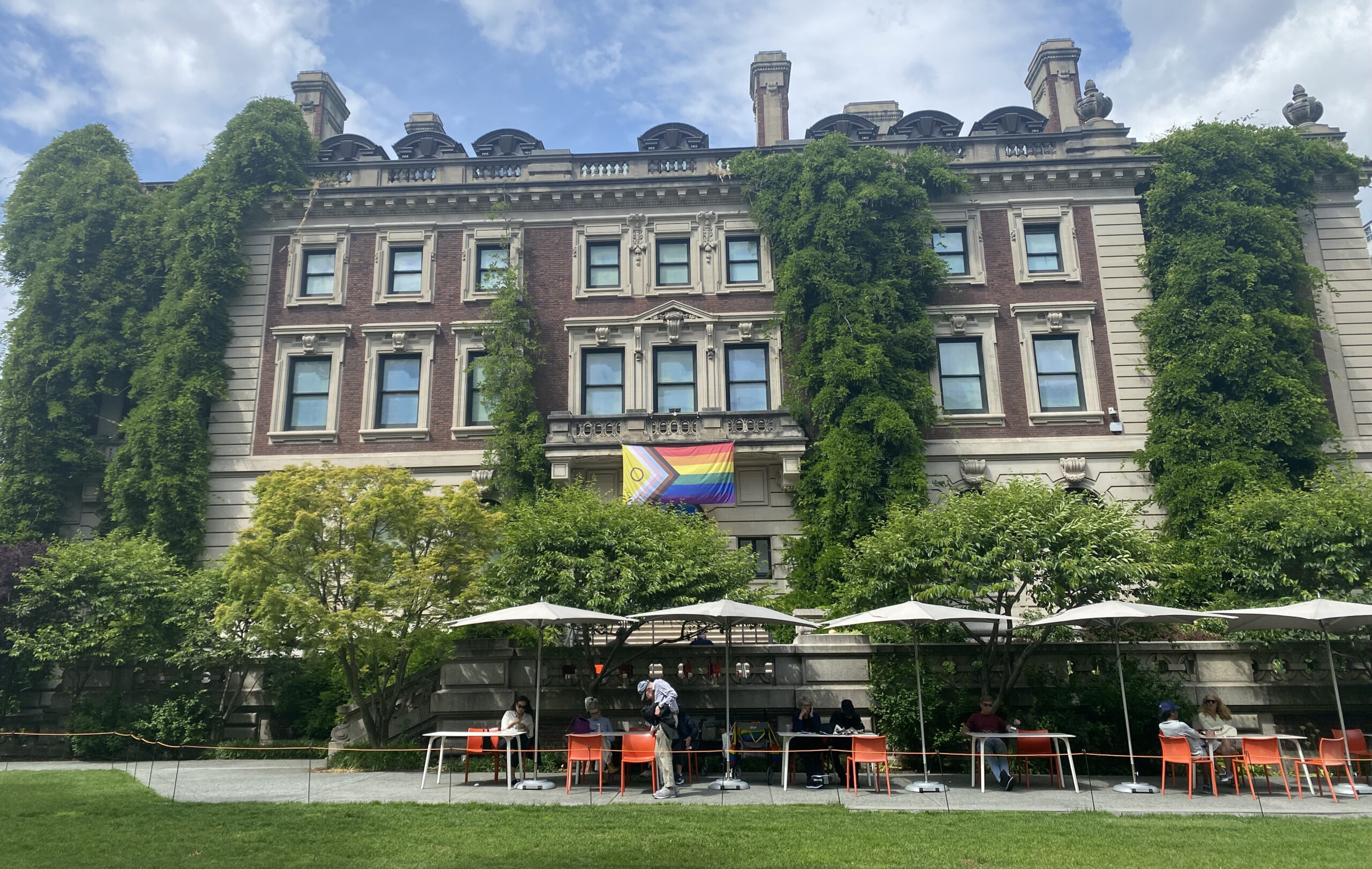
The Intersex-Inclusive Progress Pride flag, installed at Cooper Hewitt, Smithsonian Design Museum in the Arthur Ross Terrace & Garden. Installation produced by Molly Engelman and Dillon Goldschlag. Photo by Ann Sunwoo.
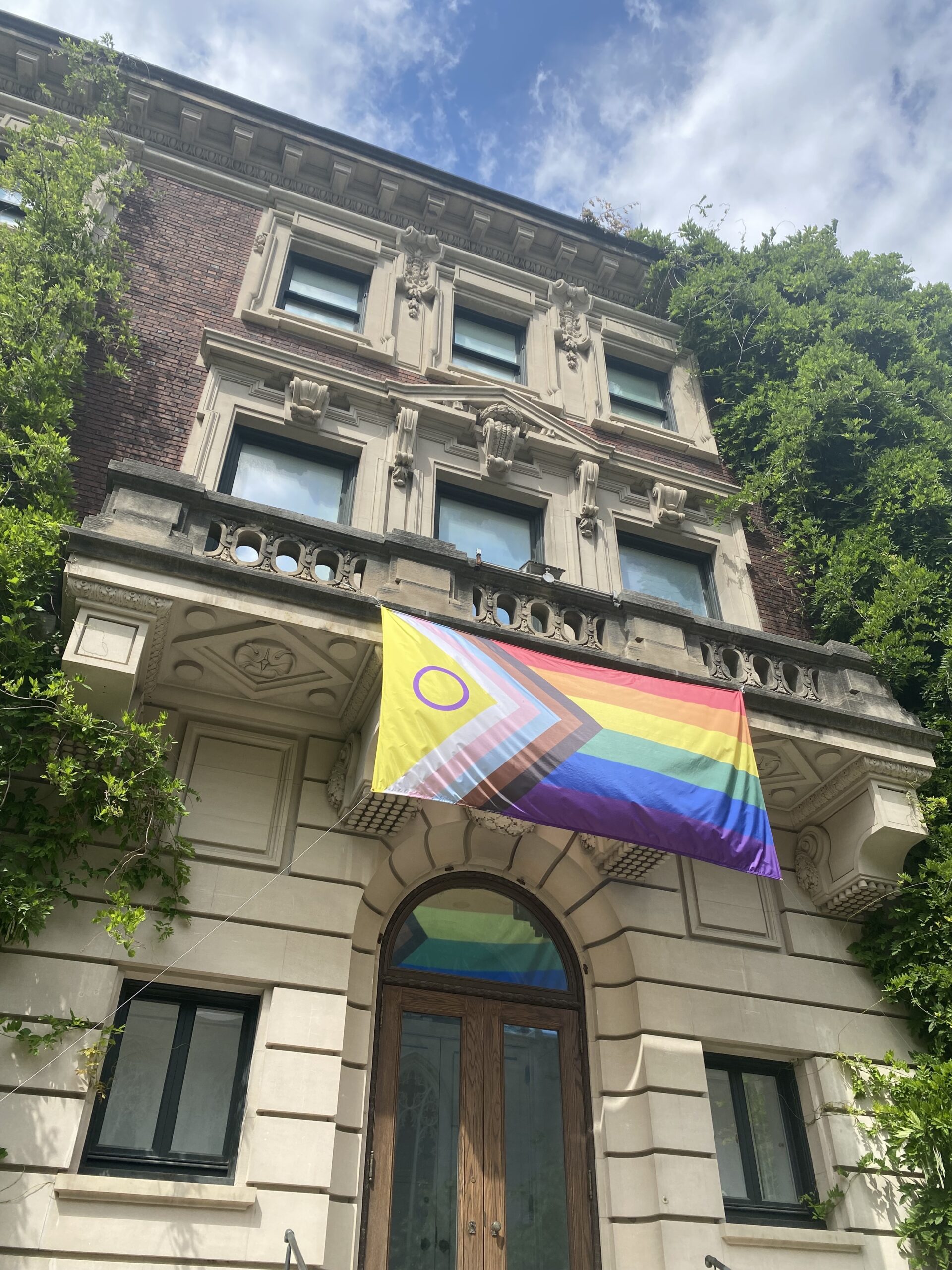
The Intersex-Inclusive Progress Pride flag, installed at Cooper Hewitt, Smithsonian Design Museum in the Arthur Ross Terrace & Garden. Installation produced by Molly Engelman and Dillon Goldschlag. Photo by Ann Sunwoo.
Designed in 2021 by Valentino Vecchietti, the Intersex-Inclusive Progress Pride flag incorporates a field of yellow and a purple circle—the elements of the intersex flag designed in 2013 by Morgan Carpenter—to symbolize intersex inclusion. The yellow represents an alternative to blue and pink, often associated with the male/female gender binary. The circle symbolizes wholeness and expresses the need for autonomy and integrity.
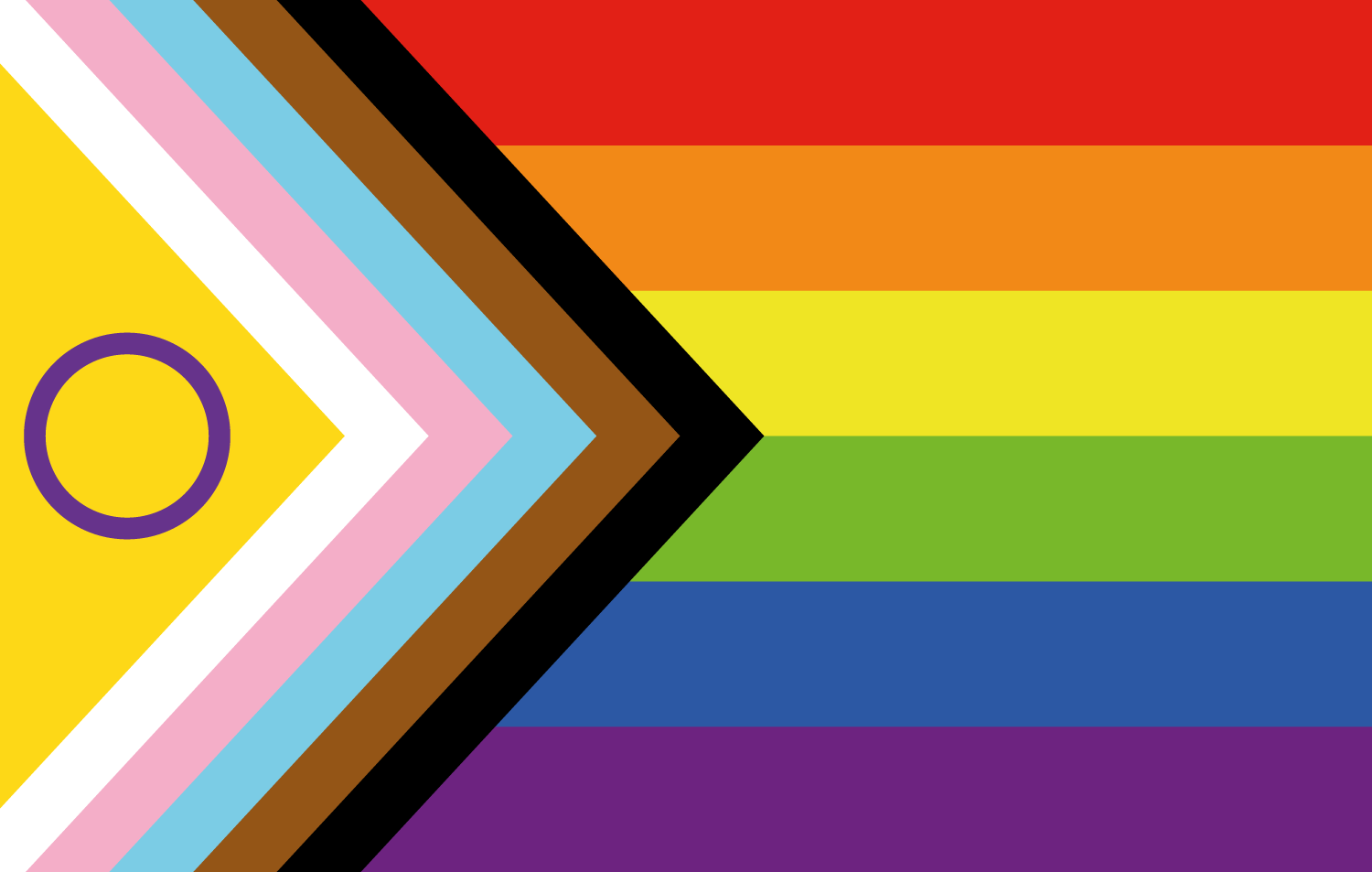
The Intersex-Inclusive Progress Pride Flag. Courtesy of the designer.
The Pride Progress flag is itself a layering of queer flags and graphics. Observing the ubiquitous six-striped rainbow flag, the Pride Progress flag elevates additional, intersectional identities with an overlaid chevron, striped in white, pink, blue, brown, and black. It was introduced by Daniel Quasar in 2018. The white, pink, and blue stripes reference the Transgender Pride Flag, designed by Monica Helms in 1999 and playing on the traditional gendering of the colors pink and boy for girls and boys with white representing those who operate outside of that cisgender binary; the brown and black are inspired by the Philadelphia Pride Flag introduced at Philadelphia Pride in 2017 to honor queer people of color.
Vecchietti commented on their motivation to create the new design including intersex identity: “#intersex inclusion we need to [see] it!” Changes to the traditional Pride flag reflect ongoing triumphs, struggles, and acceptance of marginalized communities within the broader LGBTQ+ community. As journalist Shar Jossell notes in Them, “The circle that Vecchietti added to the Pride flag isn’t just a statement of inclusion, it’s a symbol of an ongoing human rights struggle.”
On June 11, 2023, the Smithsonian Institution flew the Intersex-Inclusive Progress Pride flag above the Castle in Washington, DC. Through advocacy from Smithsonian Pride Alliance, this marks the first time in its history that the Smithsonian has formally raised a Pride flag on its DC campus. The flag was also flown at the Smithsonian’s National Museum of American History.
SOURCES & FURTHER READING
Carpenter, Morgan. “An Intersex Flag.” Intersex Human Rights Australia, first posted July 5, 2013, updated June 20, 2019. https://ihra.org.au/22773/an-intersex-flag/.
Dean, Ben. “The Philly Pride Flag, Explained.” The Philadelphia Inquirer, June 12, 2021. https://www.inquirer.com/philly-tips/philadelphia-pride-flag-20210612.html.
Jossell, Shar. “This Progress Pride Flag Is Designed for Intersex Inclusion.” Them, June 8, 2021. https://www.them.us/story/progress-pride-flag-intersex-inclusive-makeover.
Kennedy, Matthew. “The Rainbow Flag @ Copper Hewitt.” Cooper Hewitt Blog, June 11, 2019. https://www.cooperhewitt.org/2019/06/11/the-rainbow-flag-cooper-hewitt/.
“LGBTQ+ Pride Flags,” Human Rights Campaign. https://www.hrc.org/resources/lgbtq-pride-flags.
Ott, Katherine. “Spinster, Confirmed Bachelors, and LGBTQ Collecting.” O Say Can You See: Stories from the Museum, August 19, 2014. https://americanhistory.si.edu/blog/2014/08/spinsters-confirmed-bachelors-and-lgbtq-collecting.html.
“Who designed the transgender flag?” Smithsonian Sparks, March 29, 2022. https://www.si.edu/stories/who-designed-transgender-flag#:~:text=Monica%20Helms%20designed%20the%20first,parade%20in%20Phoenix%20in%202000..
